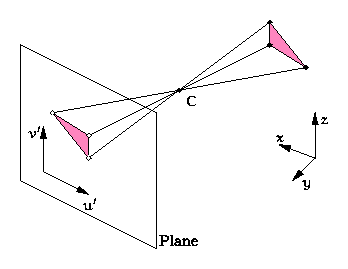
Fig.1 : The Pinhole Camera Model & the 3 pt. perspective problem.
Last update: Sept. 8, 1998
Publications on the Retrieval of Perspective :
BibTeX references.
R. M.
Haralick, C.-N. Lee, K. Otternberg, and M. Nölle
Int. J. of Computer
Vision, 13(3):331-356, 1994.
The problem of estimating the projection matrix is usually treated by making the assumption that a larger number of points can be identified or tracked in the image, as in the application we are aiming at. To obtain a unique solution of the problem, at least 6 points (in a general position) are necessary. However it is interesting fro certain applications to investigate, if pose estimation is, at all, possible with three or at least four points. This particular problem has already been focused on long before the advent of computer vision and a review of different solution strategies is provided here. The main result states that we can, in general, calculate the pose from 3 points, but we might obtain up to 4 distinct solutions. This is not disturbing if we are working with image sequences. By imposing smoothness constraints on the motion of the tracked points, we can eliminate irrelevant solutions.

Fig.1 : The Pinhole Camera Model & the 3 pt. perspective problem.
Rothwell, C., Forsyth, D., Zisserman, A. and Mundy, J.
In Proc. International Conference on Computer Vision, pages 573-582,
1993.
W.J.Wolfe, D.Mathis, S.W.Sklair & M.Magee
IEEE Trans. on PAMI, vol.13, pp.66-73, 1991.
E.A. Lumsden,
in The Perception of Pictures, 1980
Page created & maintained by Frederic Leymarie,
1998.
Comments, suggestions, etc., mail to: leymarie@lems.brown.edu